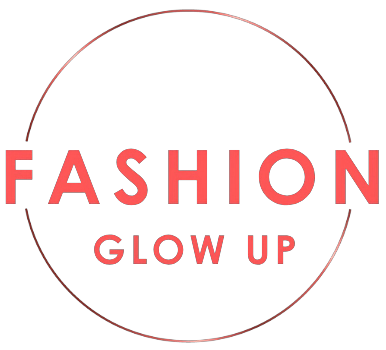Scented Like a Snack, Sold Like a Status Symbol: The Foodification of Beauty
In a beauty industry where storytelling is as vital as scientific claims, food has emerged as a key element that drives genuine consumer engagement. Combining literal taste and fashionable appeal, food-infused beauty products create emotional bonds, invoke nostalgia, and even signify social status.
The Evolution of Food-Inspired Beauty
What started in the 1990s with Lip Smacker’s Cotton Candy lip balm craze has now transformed into a widespread cultural phenomenon fueled by social media. Beauty enthusiasts chase trends like “glazed donut skin,” which has amassed over 1.5 billion views on TikTok, seek out dessert-inspired scents (with a +182.1% search growth reported by Spate), and embrace looks such as “strawberry girl makeup,” popularized by a single TikTok tutorial garnering 45.1 million views. Responding to this demand, beauty brands are crafting products, partnerships, and campaigns that mimic the look, scent, and feel of sweet treats and beverages.
Why This Trend Resonates Now
Beauty critic Jessica DeFino attributes the rise of food-based beauty to the anti-diet culture movement that became mainstream in the mid-2010s. She explains that as body-critical messaging waned, skin-focused narratives took over, shifting the emphasis from weight loss to skincare routines targeting wrinkles, acne, and hyperpigmentation. The liberating message of “all bodies are good bodies” was somewhat offset by an emerging pressure around skin perfection, idealized as “glazed donut skin” or “Jello skin.”
With the 2024 surge in GLP-1 weight-loss drug use—correlated with a 7% drop in sweet bakery sales—beauty products themed around food offered a non-caloric indulgence. Collaborations like Dove x Crumbl and e.l.f x Dunkin’ allowed consumers to enjoy treat-inspired products without dietary guilt, fitting neatly into the beauty industry’s standards for appearance and consumption.
DeFino also links the trend to economic factors such as inflation and rising grocery costs, suggesting that food-themed beauty products could become luxury status symbols.
The Psychological Appeal of Food in Beauty
Food represents both nourishment and comfort, making it a powerful emotional trigger, especially during uncertain times. Engaging all five senses—through visual design, scent, texture, and color—creates a stronger connection between consumer and product, turning everyday beauty routines into immersive experiences.
Laneige’s Glaze Craze Tinted Lip Serum, inspired by donuts, exemplifies this approach. Featuring a donut-shaped applicator and dessert-like scents such as Strawberry Sprinkles and Cinnamon Sugar, the product’s launch saw record social media engagement and millions of views. The campaign’s success underlines the importance of visual storytelling and sensory marketing in today’s beauty industry.
Moreover, scent plays a critical role, as olfactory stimuli are closely linked to emotions and memories. Laneige intentionally crafted its lip serum to evoke nostalgic feelings, transporting users to warm, comforting memories like childhood visits to bakeries.
Even without physical products, brands like Glossier use powerful visuals and collaborations—such as with NYC cake artist Yip.Studio—to evoke sensory experiences that go beyond sight, hinting at texture, taste, and sound, such as ASMR in their Espresso Balm Dotcom campaign.
Collaborations That Crave Attention
Partnerships between beauty brands and well-known food chains have proven especially effective, tapping into consumers’ emotional connections with familiar flavors. For instance, rhode Skin’s collaboration with Krispy Kreme led to a 700% increase in social media engagement, proving that combining food and beauty resonates deeply.
Native’s partnerships with Dunkin’ Donuts and Jarritos allowed it to offer fans familiar indulgences in new, beauty-oriented forms. Testing scents like Boston Kreme deodorant showed consumers’ openness to novel experiences with recognizable flavors. The Jarritos collaboration also utilized the beverage brand’s vibrant aesthetics to create eye-catching packaging that consumers proudly display.
Such collaborations help beauty brands break traditional product boundaries and attract new audiences. Erewhon, a popular Los Angeles grocer and café, serves as a launchpad for beauty-beverage crossovers, with brands like rhode and Kosas benefiting from this trend.
BondiBoost’s alliance with Australian café Two Hands to produce a minty matcha drink exemplifies this lifestyle integration, reflecting the brand’s wellness philosophy and meeting consumers in the spaces they frequent.
Integrating Food Culture into Marketing and Product Development
Beauty brands are increasingly tapping into food-related trends beyond product scents or flavors. eos, for example, embraced Gen Z’s fascination with “hacking the menu” by encouraging consumers to mix and layer limited-edition lip balm flavors, creating personalized “recipes” and a sense of community.
Glow Recipe leverages transparency and authenticity through behind-the-scenes content showing fruit preparation for their products, making skincare approachable and fun. These strategies foster engagement and deepen customer loyalty.
Edible Ingredients Become Star Players
More than just aesthetics, the use of edible ingredients in beauty signifies a functional trend grounded in tradition and efficacy. Ingredients like milk, rice, and watermelon have deep roots in cultural self-care practices and are gaining traction globally, especially as K-beauty grows in popularity.
Glow Recipe co-founder Christine Chang credits Korean skincare’s holistic heritage for popularizing food-based ingredients like fermented rice water and honey. Glow Recipe’s success at Sephora illustrates the market’s appetite for this fusion.
Similarly, bodycare brand Kate McLeod’s founder, a former pastry chef, creates nourishing products by blending kitchen staples like cocoa butter and almond oil, offering consumers transparency and ritualistic pleasure. Her artisanal packaging, inspired by chocolate boxes, adds a luxury touch that resonated during holiday sales.
Established brands like Elemis are also joining the edible beauty movement, offering products like the Pro-Collagen Black Cherry Cleansing Balm, which combines sophisticated aromas to provide emotional comfort through daily skincare rituals.
Looking Ahead: The Future of Food and Beauty
The fusion of food and beauty has evolved into a sophisticated form of storytelling, self-expression, and science-driven indulgence. This trend connects with fundamental human desires—comfort, memory, and pleasure—while adapting to wellness trends, economic realities, and digital-first branding strategies.
As consumers become more ingredient-conscious and community-driven, brands that blend transparency, cultural relevance, and sensory delight will remain at the forefront of the industry, continuing to innovate with product crossovers and immersive experiences.
